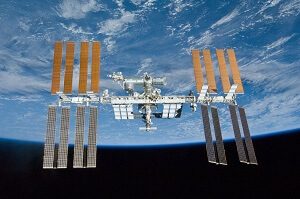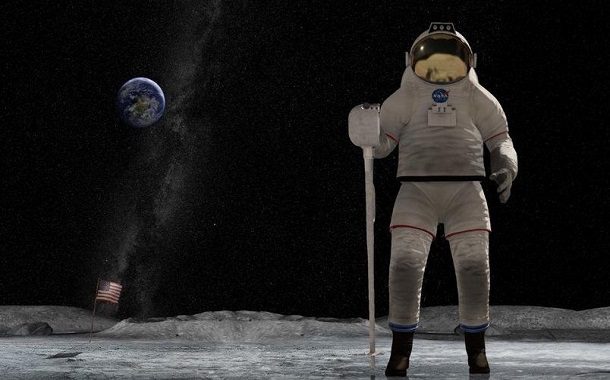How Much Does a Trip to the Moon Cost?
Last Updated on April 3, 2024
Written by CPA Alec Pow | Content Reviewed by ![]() CFA Alexander Popinker
CFA Alexander Popinker
Since the Apollo missions ended in the 1970s, the prospect of traveling to the moon has captured the public imagination. With recent technological advances and new ambitions in space exploration, the idea of commercial lunar travel is moving closer to reality. But how much would it actually cost to take a trip to the moon?
This article examines the complex factors that come into play when pricing a hypothetical moon voyage for space tourists. While an exact dollar value is elusive, we can analyze the expenses involved to estimate a lunar travel budget. Join us on a thought journey to the moon and back while exploring this astronomical question!
How Much Does a Trip to the Moon Cost?
According to early projections, a trip to the Moon per passenger could range from $100 million to $150 million and more. Given the huge uncertainties and variables surrounding pioneering commercial space endeavors, estimating an exact dollar value for a moon trip is difficult. However, as technology progresses and spaceflight is proven safe and reliable over time, costs are expected to gradually decrease.
Major costs factored into early estimates include:
Vehicle Development:
- Designing and engineering new large orbital spacecraft capable of a lunar journey
- Constructing moon landers for surface touchdown (for landed missions)
- Test launches, safety improvements, and design iterations
Recurring Production Costs:
- Building each spacecraft – Billions invested per launch vehicle
- Engine production – Hundreds of millions per set of flight engines
- Operational labor – Thousands of engineers required for launches
Mission-Specific Expenses:
- Astronaut training for passengers – Approximately $1 million+ per person
- Life support systems – Passenger cabin, spacesuits, consumables: ~$50 million
- Propellants and provisions – Food, water, fuel costs for a weeklong trip
Program Expenses:
- Mission control crews and facilities
- Flight surgeon and medical personnel
- Insurance premiums – Likely 10% or more of total price
- Profit margin – Buffer to account for overages
As technology matures and programs scale, the high fixed costs of development and equipment can be distributed across more missions, potentially lowering per-person prices significantly.
The Motley Fool states that NASA’s cost to send astronauts to the moon is reported to be $4.1 billion per four-person flight, equating to $1,025,000,000 per astronaut.
GOBankingRates website notes that the cost to go to the moon is estimated at $140 billion for the first 9 trips, and the cost to go to space, come back, and go again is reported to be $1.56 billion per mission.
According to The Verge, Space Adventures quotes a price of about $175 million per seat for a trip around the moon.
Golden Spike Co. advertised tourism trips to the lunar surface with an estimated cost of between $500 million and $750 million, as Space.com notes.
The Evolution of Private Space Travel
For decades, space travel was exclusively undertaken by government-funded agencies sending highly trained astronauts to space for scientific missions. But the turn of the millennium saw the rise of private space companies aiming to expand access.
Companies like Virgin Galactic, Blue Origin, and SpaceX envision a future where civilians can purchase tickets for suborbital flights, orbital missions, and even voyages to destinations like the moon and Mars. Their progress has been steadily turning the concept of space tourism into a plausible reality.
While suborbital hops just beyond the boundary of space offer easier goals, several companies already have their sights set on the moon. From wealthy thrill-seekers to middle-class space enthusiasts, this untapped lunar tourism market aims to open space to broader audiences.
Making commercial moon missions feasible will require massive technological advances and infrastructure investment. But each successful new rocket launch and milestone achieved brings us one step closer to realizing humanity’s lunar travel dreams.
Who Are the Main Players?
A variety of private space companies and space agencies worldwide are spearheading efforts to develop spacecraft, rockets, equipment, and operations needed to make lunar tourism possible:
Private Spaceflight Companies
- SpaceX – Elon Musk’s aerospace company is developing the next-generation Starship super heavy rocket for commercial circumlunar trips.
- Blue Origin – Jeff Bezos’ space firm is designing the Blue Moon crewed lunar landing system to deliver payloads and people to the moon’s surface.
- Virgin Galactic – Richard Branson’s spaceline aims to provide the spaceflight portion of a lunar journey, partnering with other firms.
- Axiom Space – This startup is coordinating plans for commercial moon missions including crew training, coordination, and more.
National Space Agencies
- NASA – Through programs like Artemis, NASA is supporting private moon missions with technology development, infrastructure, and expertise.
- Roscosmos – Russia’s space corporation is collaborating with companies on lunar programs and offering spots on circumlunar spaceflights.
- ESA – The European Space Agency is providing dedicated Moonlight initiative funds to support private lunar projects.
- ISRO – The Indian Space Research Organisation aspires to enable crewed moon missions through advancements like its Chandrayaan projects.
Tourism Agencies
- Space Adventures – This space tourism company has arranged eight private astronaut missions to the International Space Station already.
- Space Perspective – Using high-altitude balloons, this startup aims to offer access to space’s dark sky and star scenery.
Want to visit a place on Earth that looks like our of this world? Go to a place where you can see the Aurora Borealis.
What Might a Lunar Tourist Trip Entail?
While details will vary across providers, a hypothetical commercial moon trip for private citizens could potentially involve:
Pre-Flight Preparations
- Completing medical exams to prove flight physical and psychological fitness
- Astronaut training for 6+ months at a private space academy to prepare for rigors of spaceflight
- Mission simulation exercises in spacecraft mockups and virtual reality
- Space environment orientation like zero-G plane flights and pressure chamber tests
The Spaceflight Itinerary
- Rocket launch from a spaceport aboard a powerful new spacecraft
- Up to 3 days spent in transit to the moon
- Lunar orbit insertion upon arriving at the moon
- 3 days in lunar orbit viewing surface, taking photographs, live broadcasts
- For landed expeditions: Moon landing at a designated lunar site
- Moon surface exploration for ~1 day in a pressurized lunar rover
- Additional lunar orbiting time for observations
- Trans-Earth injection rocket burn to depart moon’s gravitational pull
- 3-day moon-to-Earth return flight
- Re-entry and splashdown at mission conclusion
Mission Duration
- Total estimated mission duration: ~7 days from launch to splashdown
- Trip timeline: Flexible based on launch windows
- Training duration: 6-12 months pre-flight
How Does This Compare Historically?
 For context, NASA’s Apollo program cost about $28 billion from 1961-1972, equal to $280 billion today adjusted for inflation. Spread across the 12 astronauts who walked on the moon, each Apollo moon trip cost around $22.5 billion in present-day dollars.
For context, NASA’s Apollo program cost about $28 billion from 1961-1972, equal to $280 billion today adjusted for inflation. Spread across the 12 astronauts who walked on the moon, each Apollo moon trip cost around $22.5 billion in present-day dollars.
The Hubble Space Telescope cost approximately $1.5 billion adjusted for inflation, while the Extremely Large Telescope was around $1.3 billion.
So, while $100 million-$150 million represents an unfathomable amount for most, it is dwarfed by past government-funded space projects. As technology progresses, economies of scale kick in, and demand rises, prices are likely to continue becoming more attainable.
Major Hurdles to Overcome
Many monumental technical and financial obstacles stand in the way of commercial lunar travel becoming as routine and affordable as jet travel:
Technological Challenges
- Passenger safety – Developing fail-safe systems for launch, spaceflight, and landing
- Life support systems – Creating closed-loop life support that is reliable for durations needed
- Radiation – Mitigating hazardous cosmic radiation exposure during transit
- Lunar environment engineering – Making vehicles and equipment durable for the harsh lunar landscape
- Reusability – Designing for full rocket and spacecraft reusability to reduce costs
Business Challenges
- Capital requirements – Securing the enormous upfront financing required
- Time horizon – Long development timelines before revenue is realized
- Profitability – Dropping prices while still sustaining healthy profit margins
- Liability – Insuring high-risk spaceflight as a commercial endeavor
- Regulations – Navigating legal and government oversight
Demand Risks
- Market size – Having broad enough demand at introductory high price points
- Competitors – Holding market share as more space tourism players emerge
- Reputation – Maintaining excellent safety record to attract customers
More Than a Ticket Price
For wealthy individuals willing and able to pay the steep price, a moon trip offers incredible experiences that are literally out of this world, including:
- Witnessing Earth rise over the lunar horizon
- Seeing distant stars and planets unfiltered by atmosphere
- Experiencing weightlessness and low lunar gravity
- Walking on the moon’s surface (on landed missions)
- Joining an exclusive club of lunar explorers
While the dollar value seems astronomical, the chance to travel to the moon is a once-in-a-lifetime opportunity that cannot be valued. For many, it would be the adventure of a lifetime.
Final Words
The next era of lunar travel is still in its infancy, with a price tag only the ultra-wealthy can afford. But each small step brings us closer to the day when average citizens can make their childhood moon voyage dreams reality just as pioneers like Columbus opened transoceanic travel. For now, we can only imagine the enormous price tag such a trip must command.
Frequently Asked Questions
How long does a moon trip take?
A roundtrip journey to the moon for space tourists is estimated to take roughly one week – 3 days transit to the moon, 1-2 days in lunar orbit and potentially on the surface, and 3 days return to Earth. The exact duration depends on the launch window, flight path, and itinerary.
Would we survive without the moon?
While a moonless Earth would have some effects like impacting tidal patterns, seasons, and nocturnal illumination, humankind would be able to survive without the physical presence of the moon in space. The cultural and inspirational significance of the moon may be harder to replace.
How high can you jump on the moon?
Due to the moon’s lower gravity, approximately one-sixth that of Earth’s, human’s leaping abilities are greatly enhanced. Astronauts have jumped as high as 4 feet vertically on the lunar surface with their EVA suits on. Without a suit, jumps above 10 feet would be possible.
Why did we stop going to the moon?
After achieving the goal of landing astronauts on the moon during the Apollo program, national interest and funding declined, turning attention instead to near-Earth missions like developing space stations. Recent initiatives like NASA’s Artemis program aim to bring humans back to the lunar surface.
What is Google Moon?
Google Moon is a feature in Google Earth that provides detailed lunar maps and imagery from lunar spacecraft used to virtually explore the moon’s surface. It supports tagging and tour creation to annotate areas of interest.


can I go to space so I can die in quite please ? I don’t want to do my GCSEs